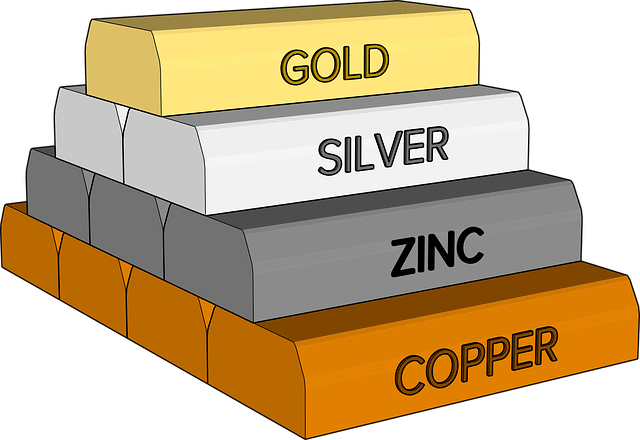One of the world’s most valuable and frequently used metals, copper is a highly traded item on the primary commodities market. Learn about copper, its history, what influences copper prices, and trading advice in this article.
WHAT DOES COPPER MEAN?
Copper is a plentiful, reddish-brown metal mined for use in various industries, including agriculture and construction. It is far less expensive since it is not regarded as a monetary standard, in contrast to other metals sold on the commodities market (such as gold and silver). Copper is a volatile, often traded item on the main commodities market. Still, some of the supply and demand variables that impact it are similar to those that drive other commodities.
WHAT IS THE USE OF COPPER?
Fertilizers, jewelry, home appliances, and other items are just a few uses for copper. It is a crucial element in electrical equipment like wiring and motors, as well as in the building of pipes and tubing, since it is a robust and ductile conductor of heat and electricity. It is also employed in alloys like bronze and brass, which are used for decorations, zips, and valves, among other things.
THE HISTORY OF COPPER
Copper’s history dates back around 10,000 years to the Bronze Age, when it was the first metal to be smelted. At this time in history, copper’s worth was determined through bartering, in which goods like food, wine, animals, and other metals were exchanged for one another.

Since the Roman period, It has been used in addition to gold and silver to manufacture coins. Still, due to its poor intrinsic worth, copper was never regarded as a monetary standard.
Today, in the 20th century, the red metal is employed in a variety of industries all over the globe. As a consequence, the price of copper has been closely related to its industrial uses in the industries mentioned above.
Copper’s price increased significantly during the commodities boom of the 2000s, rising from around $1/lb at the beginning of 2004 to $4/lb by May 2006. This, other significant price changes throughout the following years and the causes are shown in the figure below.
PRICES OF COPPER (MID-2013 TO 2019)

WHO ARE THE LARGEST PRODUCERS OF COPPER?
Chile, Peru, and China are the nations with the highest volume of copper production. Chile produces more than twice as much as the next-largest producer, Peru; in 2018, Chile produced 5.8 million metric tonnes, while Peru produced 2.4 million. The top ten producers are shown below, along with their metric tonnage production during 2018:
- Chile –5.8 million
- Peru–2.4 million
- China –1.6 million
- United States – 1.2 million
- DR Congo –1.2 million
- Australia–0.95 million
- Zambia –0.87 million
- Indonesia –0,78 million
- Mexico –0.76 million
- Russia –0.71 million
- Source, Statista 2018
The three biggest participants in the copper market as of 2019 are the US-based Freeport-McMoRan, the Chilean Codelco, and the Anglo-Australian mining behemoth BHP Billiton.
WHAT FACTORS AFFECT COPPER PRICES?
Numerous variables based on supply and demand issues, as well as the forecast for substitute metals, affect the price of copper.
- Supply
Geopolitical and natural occurrences that reduce mining production, including strikes and earthquakes, may influence prices.
- Demand
Net importing nations, which import more copper (or other products and services) than they export, feed the demand side. The demand for copper has increased almost 20 times in the last century as emerging countries utilize it to build their infrastructure and strengthen their economies.
Since a significant portion of the metal is used in the construction of homes, the price of copper is also correlated with domestic housing markets. This implies that variables like non-farm payrolls, mortgage rates, and GDP that influence the housing sector often impact copper prices.
- Substitute metals
Last but not least, the price of copper may also be affected by the use of substitute metals. If copper prices increase too high, consumers will look for less expensive options, which would reduce demand. For instance, aluminum usage improvements for wiring and vehicle manufacturing occurred in the middle of the 2000s due to the growing price of copper.
How is Copper Traded?
There are several methods to trade the red metal, including exchange-traded funds, copper futures, and options on the commodities market (ETFs). Spread betting and CFD trading may also be utilized, as allowed, to make predictions about the price of copper. Learn more about trading copper and the technical analysis methods that will enable you to trade this commodity more reliably.

Reasons to Invest in Copper
The justifications for trading copper vary somewhat from those for gold and silver. Despite being widely used and popular among merchants, copper is in plentiful supply. Therefore, copper’s price is determined by its use, unlike gold and silver, which have intrinsic worth.
Because copper pricing may be used to gauge economic health, it has acquired the moniker “Doctor Copper” and the reputation of possessing a metaphorical Ph.D. in economics. Consequently, traders can position themselves in copper depending on their perception of global growth and GDP.
But there is danger involved in making bets on copper prices since the market would suffer if the economy slowed down. Copper supplies are limited, like all other metals, and could run out in the next 60 to 70 years is another factor that commodity traders need to consider.

